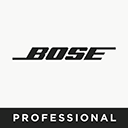Relevant Product(s)
- ControlSpace Designer
Table of Contents
Objective
Almost every project file will eventually need to be revised, expanded, or serviced. When this happens, the original programming documentation is often unavailable and the ControlSpace Designer project file becomes the primary source for information about how the system is operating.
Object Labels
ControlSpace Designer objects can be renamed individually or in groups. When each object is placed in ControlSpace Designer, it receives a unique name. This name will be an abbreviation of the object type followed by a number that increments as each additional object of that type is added to the project. While this does provide a unique identifier for each object, it does not provide any information about the purpose of each object within the project.
An object may be renamed by selecting the object(s) and pressing the F2 key, or right clicking on the selected object(s) and choosing Rename Selection from the menu. This allows each object to be given a descriptive name that indicates the purpose of that object. If multiple objects need to be given names that are the same other than a channel number, those objects can all be renamed at once by selecting all the objects to be renamed and hitting the F2 key or right clicking to open the Rename Selection dialog. Using Rename Selection allows multiple objects to be renamed using a wildcard to indicate where the channel number should be inserted. The starting number can be specified and the naming order can be reversed if needed.
Using descriptive object names can reduce errors when using the project file and provides a way to clarify the intended functionality of each object.
Starting in v5.0, ControlSpace Designer requires a unique name for each object.
Channel Labels
Many objects also offer the ability to label each individual channel. These channel labels can be edited in the Properties window which is accessed by clicking on the Window menu and selecting Properties.
For objects with editable channel names, each channel will have a default label in the Properties window. These labels can be changed to provide a descriptive label for each channel.
Label Propagation can be enabled to provide fast channel labeling. By default Label Propagation is turned off and can be enabled in the Tools Menu. The direction of the flow of labels, left-to-right or right-to-left, can be selected by choosing if Downstream or Upstream labeling is being propagated.
Port Spacing
The spacing between ports on a processing object can be changed by using a click-drag to select the port(s) to be moved and then using the up and down arrow keys to move the ports. Port spacing can also be adjusted by right-clicking on the object, selecting Set Port Spacing, and entering spacing values into the table. Adjusting Port Spacing to allow the use of straight wires will result in a more readable and more easily understood project file.
Notes
Notes can be added next to or behind objects to provide instructions or explanations to others that may work on the system. Notes can also be used to create borders, visually grouping objects together. Notes can be created by right clicking on the background section of the project or design view and selecting "Add Note" or by selecting "Add Note" from the tools menu.
The font, background color, alignment and depth can be changed by right clicking on the notes.


